Abstract
A glycoprotein of molecular weight 18,000 was purified from saline extracts of cured tobacco leaves by ammonium sulfate fractionation, chromatography on Sephadex G-25 and continuous-flow preparative electrophoresis on polyacrylamide gel. Twelve of 31 volunteers (6/15 smokers and 6/16 nonsmokers) exhibited immediate cutaneous hypersensitivity (wheal and flare reactions) when injected intracutaneously with 2 mug of this material. Immunochemically similar material was demonstrated in, and purified from, cigarette smoke condensate and cigarette smoke. The concentration in cigarette smoke condensate ("tar") was determined to be 1.8-3.6 mg/g. Antigenically crossreactive material was also demonstrated in eggplants, green peppers, potatoes, and tomatoes, which, like tobacco, are members of the family Solanaceae.
Full text
PDF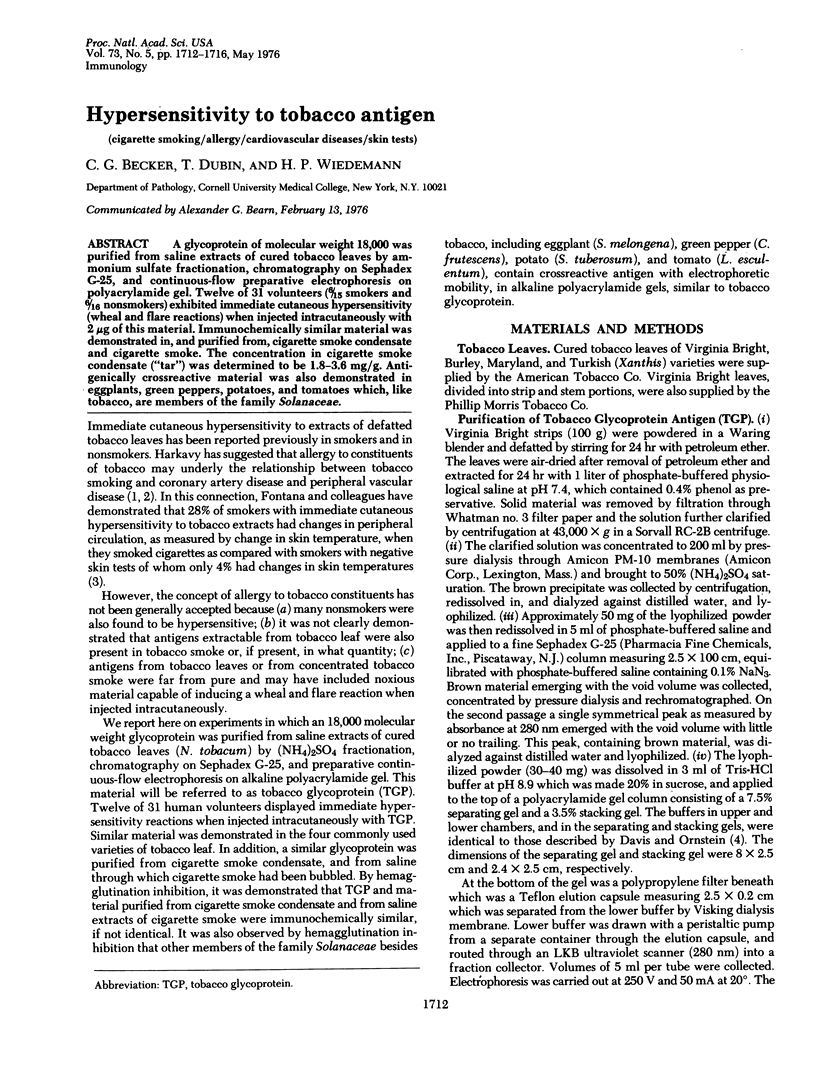
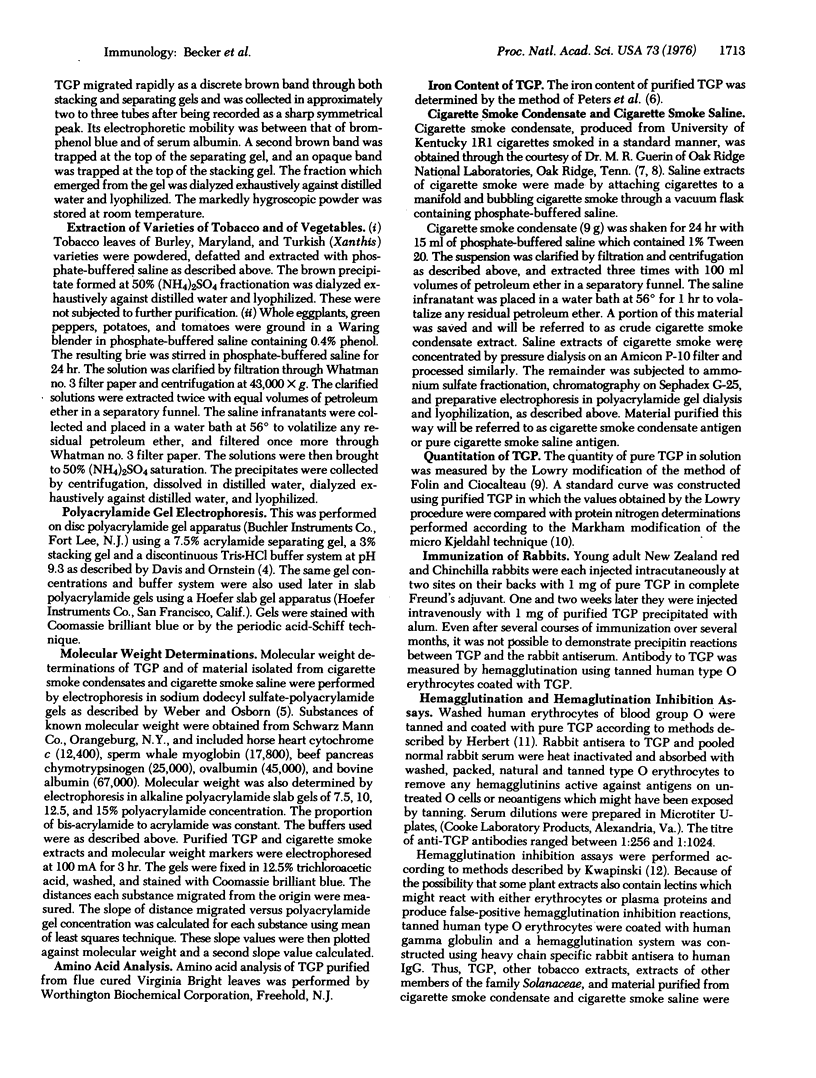
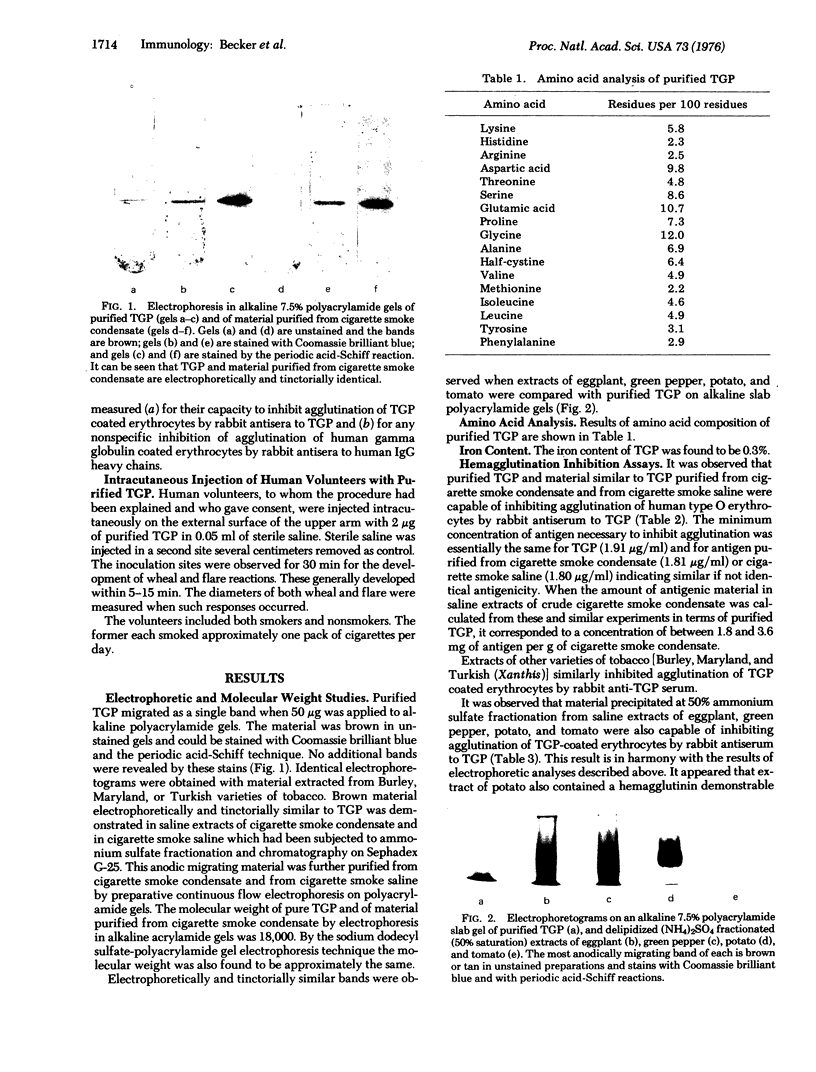
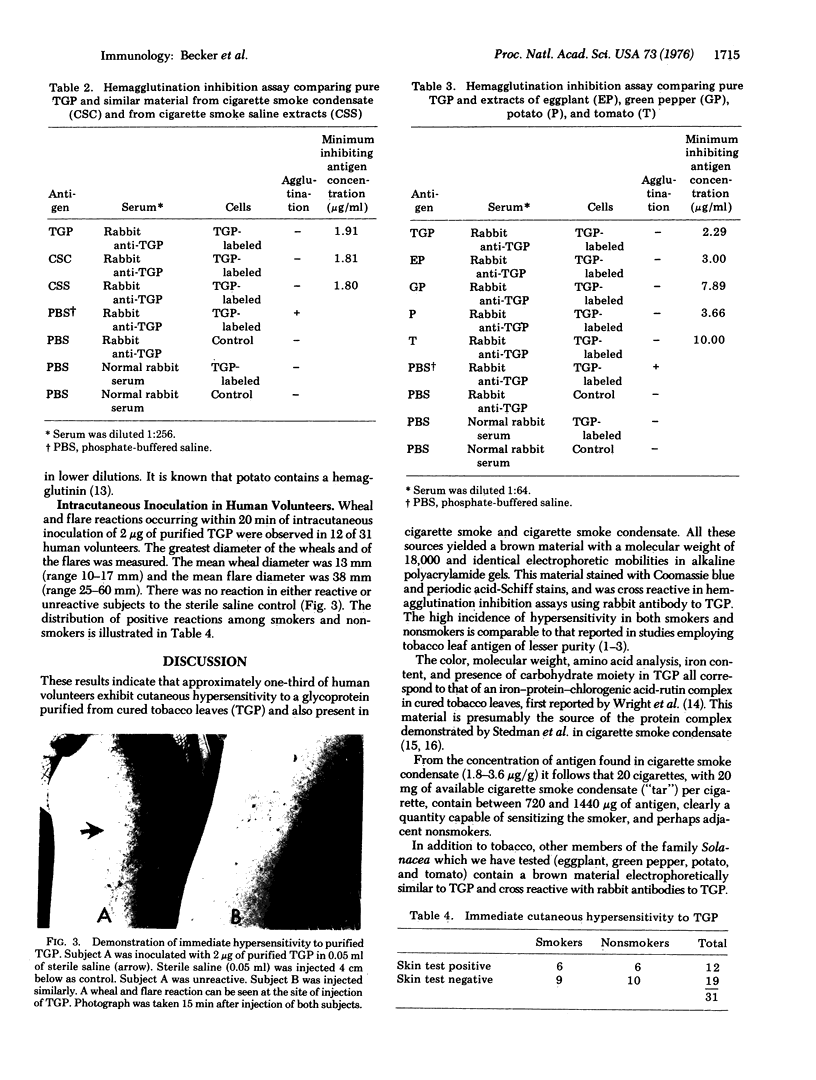
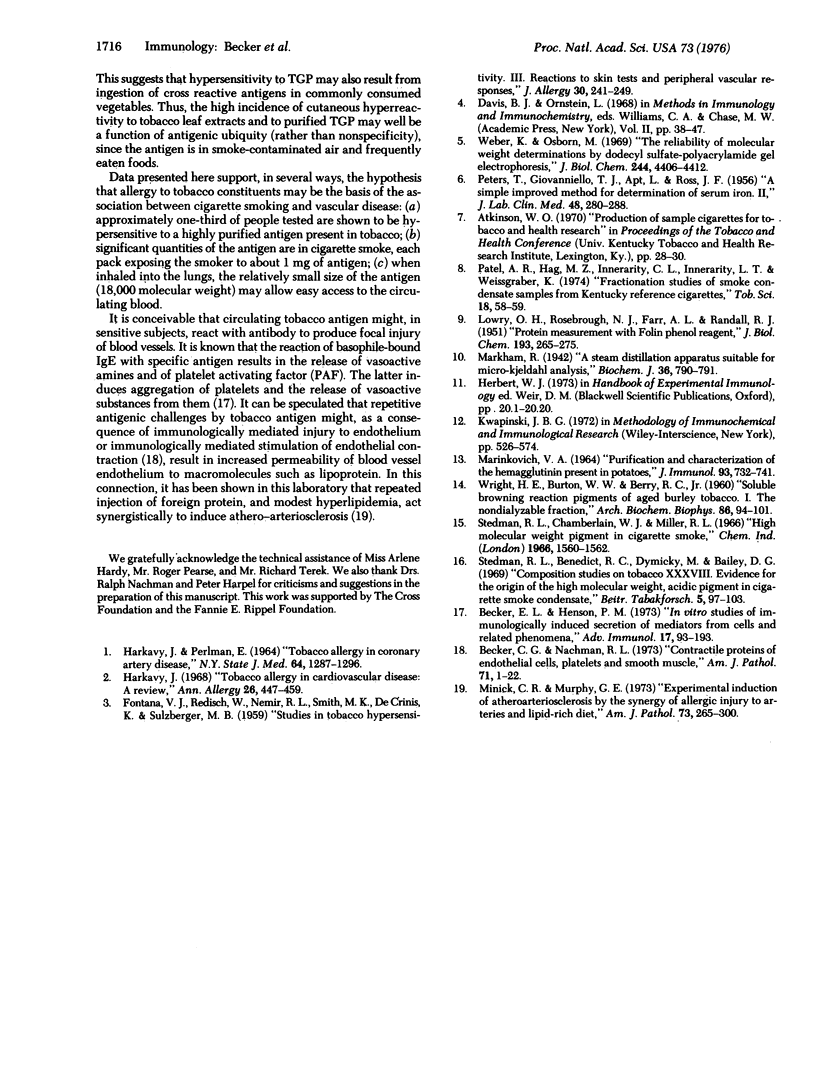
Images in this article
Selected References
These references are in PubMed. This may not be the complete list of references from this article.
- Becker C. G., Nachman R. L. Contractile proteins of endothelial cells, platelets and smooth muscle. Am J Pathol. 1973 Apr;71(1):1–22. [PMC free article] [PubMed] [Google Scholar]
- Becker E. L., Henson P. M. In vitro studies of immunologically induced secretion of mediators from cells and related phenomena. Adv Immunol. 1973;17:93–193. doi: 10.1016/s0065-2776(08)60732-4. [DOI] [PubMed] [Google Scholar]
- FONTANA V. J., REDISCH W., NEMIR R. L., SMITH M. K., DECRINIS K., SULZBERGER M. B. Studies in tobacco hypersensitivity. III. Reactions to skin tests and peripheral vascular responses. J Allergy. 1959 May-Jun;30(3):241–249. doi: 10.1016/0021-8707(59)90071-1. [DOI] [PubMed] [Google Scholar]
- HARKAVY J., PERLMAN E. TOBACCO ALLERGY IN CORONARY ARTERY DISEASE. N Y State J Med. 1964 Jun 1;64:1287–1296. [PubMed] [Google Scholar]
- Harkavy J. Tobacco allergy in cardiovascular disease: a review. Ann Allergy. 1968 Aug;26(8):447–459. [PubMed] [Google Scholar]
- LOWRY O. H., ROSEBROUGH N. J., FARR A. L., RANDALL R. J. Protein measurement with the Folin phenol reagent. J Biol Chem. 1951 Nov;193(1):265–275. [PubMed] [Google Scholar]
- MARINKOVICH V. A. PURIFICATION AND CHARACTERIZATION OF THE HEMAGGLUTININ PRESENT IN POTATOES. J Immunol. 1964 Nov;93:732–741. [PubMed] [Google Scholar]
- Markham R. A steam distillation apparatus suitable for micro-Kjeldahl analysis. Biochem J. 1942 Dec;36(10-12):790–791. doi: 10.1042/bj0360790. [DOI] [PMC free article] [PubMed] [Google Scholar]
- Minick C. R., Murphy G. E. Experimental induction of atheroarteriosclerosis by the synergy of allergic injury to arteries and lipid-rich diet. II. Effect of repeatedly injected foreign protein in rabbits fed a lipid-rich, cholesterol-poor diet. Am J Pathol. 1973 Nov;73(2):265–300. [PMC free article] [PubMed] [Google Scholar]
- PETERS T., GIOVANNIELLO T. J., APT L., ROSS J. F. A simple improved method for the determination of serum iron. II. J Lab Clin Med. 1956 Aug;48(2):280–288. [PubMed] [Google Scholar]
- Stedman R. L., Chamberlain W. J., Miller R. L. High molecular weight pigment in cigarette smoke. Chem Ind. 1966 Sep 10;37:1560–1562. [PubMed] [Google Scholar]
- WRIGHT H. E., Jr, BURTON W. W., BERRY R. C., Jr Soluble browning reaction pigments of aged Burleytobacco. I. The non-dialyzable fraction. Arch Biochem Biophys. 1960 Jan;86:94–101. doi: 10.1016/0003-9861(60)90375-1. [DOI] [PubMed] [Google Scholar]
- Weber K., Osborn M. The reliability of molecular weight determinations by dodecyl sulfate-polyacrylamide gel electrophoresis. J Biol Chem. 1969 Aug 25;244(16):4406–4412. [PubMed] [Google Scholar]





